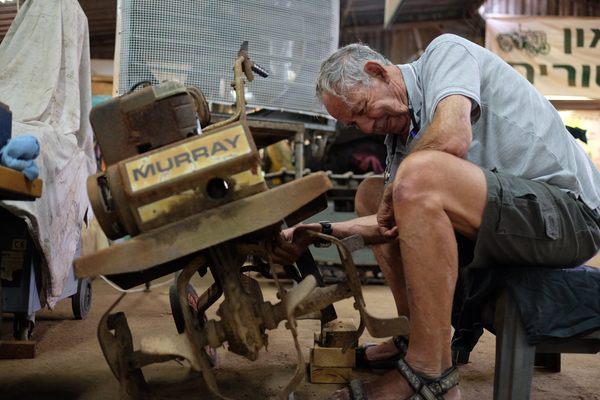How Space Stations Die
In March, China’s first space station is going to fall to Earth in a fiery ball.

Sometime in the next few months, likely in March 2018, China’s first space station Tiangong-1 is going to fall down to Earth. As it plummets from orbit in a fiery streak, most of it will be destroyed. Usually, the owners of spacecraft try to control their reentry and steer them towards lonely, watery graves. But China has lost contact with Tiangong-1, and its entry will not be controlled.
Spacecraft re-enter Earth’s atmosphere with regularity; the Center for Orbital and Reentry Debris Studies keeps a running list. Most of these spacecraft are rocket parts or satellites, and most of them end up in the South Pacific’s spacecraft cemetery—a safely unpopulated place for the world’s space-going countries to dump their space clunkers.
If debris from Tiangong-1 makes it to the Earth’s surface, it’s most likely to land in one of two bands, according to the Aerospace Corporation’s analysis—one that intersects the middle of the U.S., the Mediterranean basin, and parts of northern China, and another that intersects Chile, Argentina, and New Zealand.
The danger of anyone getting hit by space debris is still very small, but there is a poetic pull to the death of a space station, one of the few places that people have ever lived off the Earth’s surface. Space stations are born rarely, and they die rarely. Only a few have ever been sent into the atmosphere. Here we remember some of their last moments.
Salyut 1, died October 11, 1971
After 175 days in orbit, the world’s first space station burned up over the Pacific Ocean.
Skylab, died July 11, 1979
America’s first space station came down without control. Mostly, the debris landed in the Indian Ocean. But some pieces, including Skylab’s large oxygen tanks, hit the ground in Western Australia, near the town of Esperance.
One Esperance local snatched up some of the pieces, flew to San Francisco, and claimed a $10,000 prize offered by the Examiner to the first person to show up with space debris. The town collected much of the debris into a museum, where visitors can still view it. Esperance also fined the United States $400 for littering, a fine that went unpaid until this century, when a California radio station took up a collection to finally settle the debt.
Salyut 7, died February 7, 1991
In 1986, Salyut 7 was boosted into higher altitude with the idea that it would not deorbit until 1994. Instead, it fell to Earth in an uncontrolled re-entry in 1991, missing the southern Pacific Ocean, and instead trailing debris over Capitan Bermudez, in Argentina, before falling into the Atlantic.
Mir, died March 23, 2001
When Mir came down, people in New Zealand and Japan were warned to watch out for falling debris. But the space station fell safely over the Pacific Ocean, near Nadi, Fiji, where debris hunters were waiting to try to salvage pieces of the spacecraft and sell them off.





















Follow us on Twitter to get the latest on the world's hidden wonders.
Like us on Facebook to get the latest on the world's hidden wonders.
Follow us on Twitter Like us on Facebook